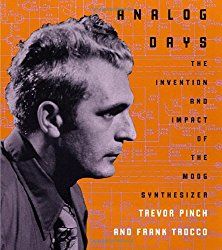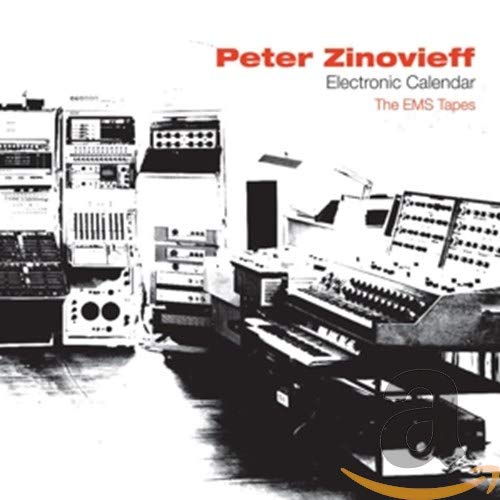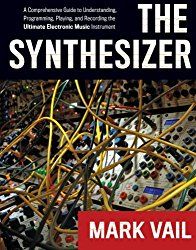
If you click the image and zoom in, to the left of the Tiptop Z3000 you should see what looks like a eurorack E-MU module. It has the classic E-Mu modular knobs as the original system in the background. The image was shared by Dave Rossum of E-Mu himself. Hopefully we will know more soon.
Update in via
Soviet Space Child (Evolution filter module further below):
Update2: pics and details on additional modules added.
"The Evolution of EVOLUTION
The fundamental core of the Rossum Electro-Music EVOLUTION Variable Character Filter is Bob Moog’s famous “ladder” filter, which was described in US Patent 3,475,623. This circuit uses the variation of the Bipolar Junction Transistor’s emitter resistance with current as the voltage variable element in an RC filter. In the Moog implementation, four identical stages each implemented a single real lowpass pole. The Moog 904A module included a “Regeneration” control that created a negative feedback path around the four poles. Since each pole provided 45 degrees of phase shift at its -3dB point, increasing this feedback produced a resonant peak at cutoff. The musical utility of the Moog filter is, of course, famous.
In 1973, E-mu Systems introduced their 1100 submodule, which was the heart of their 2100 lowpass filter module. The 1100 used a Moog ladder as its core element, but I wanted to isolate the innate audio characteristics of the filter ladder from those colorations resulting from the input level-shifters and output amplifier used in the Moog 904A. I also envisioned a DC-coupled design with a cutoff frequency range well beyond 10 octaves, as well as eliminating variations of the height of the resonant peak or oscillation amplitude with frequency control voltage.
I level-shifted the exponential generator to allow the filter signal input to be directly applied to the ladder base. I then designed a completely new output stage for the ladder; this circuit has never (to our knowledge) been used outside my designs. The entire signal path was DC coupled and the resonant feedback path phase compensated. The 1100 was my favorite filter (I liked it more than the SSM2040 I later invented, and kept the 1100 as E-mu’s modular lowpass in preference to a cheaper 2040 design). The operational range of the cutoff frequency was from about 0.1Hz to 25kHz, with stable Q’s throughout.
In launching Rossum Electro-Music, I chose a new implementation of the 1100 filter as the first all-analog module for our Eurorack offering, based on its unique and outstanding audio characteristics. I re-engineered the basic 1100 core using modern available surface-mount components and then added a number of features to the original 1100 design:
Ladder filters self-oscillate, and can be used as VCOs. I was able to design the Rossum Electro EVOLUTION’s frequency control exponential generator to be extremely accurate and temperature stable, rivaling the specifications of the best analog VCOs. I also added a novel temperature compensation circuit for the ladder emitter resistance.
The resonance (“Q”) of the original 1100 was not voltage controlled. I implemented voltage controlled Q using one cell of an SSM2164 VCA (sadly, the original 2164 is no longer produced, so a replica source is needed). Since the SSM2164 is based on my 1979 design of the SSM2010, this is an apt choice. The phase compensation has been maintained, but we added a “Q Compensation” control. The negative feedback resonance path in the 1100, like the Moog 904A, caused the amplitude of signals in the passband to be attenuated as the Q increased, which some users found undesirable. If instead the signal is inserted into the Q VCA, this effect is eliminated. In EVOLUTION, the Q Compensation control allows insertion of the signal with an arbitrary mix into either of these inputs, allowing the ratio of direct to resonant amplitude to be arbitrarily selected.
There is no inherently desirable taper for Q control. In highly resonant, but oscillation-proof filters such as state variable designs, it makes sense to exponentially control Q. But in ladder filters, oscillation is expected, and high Q’s without oscillation are not practically achievable. The Rossum Electro EVOLUTION implements linear control of the Q VCA.
The ladder design, as I implemented it, has no inherent distortion for signals far below the cutoff frequency. The characteristic timbre of the filter comes primarily from distortions of frequencies near and above the cutoff frequency. The degree of distortion depends on the signal amplitude. Consequently, it is sonically interesting to modulate the signal amplitude going into the ladder, and modulate the output signal with the precise inverse gain. This is the function of the Species control. A high voltage into the Species input will cause the filter to distort more audibly.
Because ladder filters produce their resonance by feedback, the relationship of that feedback to the drive VCAs is critical. The Rossum Electro EVOLUTION places the Q feedback within the drive VCAs. This means that the filter’s resonance is unaffected by the Species setting, but that the amplitude of any self-oscillation will be inversely proportional to the Species level. When using the filter as an oscillator, the Species control can be used to amplitude modulate the output. If oscillation is combined with an input signal, the results become even more interesting. Like the Q circuit, SSM 2164 cells are used for the drive VCAs.
With these additions, the preliminary design of EVOLUTION looked pretty complete. Then Marco asked if it would be possible to add voltage controlled slope (those marketing guys are never satisfied). My first take was that this would not be practical, because varying the slope usually involves controlling complex pole pairs, and the ladder comprises only real poles.
Then I realized that I could steer the current around individual ladder stages in an analog manner, controlling the number of poles rather than the slope. A prototype proved this was both practical and audibly pleasing. Since the resonant frequency of a ladder filter is determined by the 180 degree phase shift point, it changes with the number of poles: 60 degrees for three poles, 45 for four, 36 for five, and 30 degrees for six poles. Modulating the number of poles produces a unique 'bubbly' sound.
Two more tweaks were needed to complete the circuit. Because the number of poles not only affects the phase shift for resonance, it also changes the amount of feedback required for oscillation, the pole control circuit needs to control the Q VCA in a manner such that the same Q control voltage produces oscillation for each pole setting. And since it’s useful but difficult to tune the initial pole setting to be in the center of the range (exactly steering the current to the desired ladder poles), I added analog controlled LEDs to indicate the activation of the poles."
The Evolution filter module appears to be the module in the image above.
"EVOLUTION is Dave’s updated take on his classic enhancement of Bob Moog’s iconic ladder filter.
At the core of EVOLUTION is Dave’s unique implementation of the Moog ladder filter from the original E-mu Systems 2100 LPF module (which, incidentally, Dave counts as his favorite of all of the analog filters he designed).
For EVOLUTION, Dave has designed new capabilities that not only allow users to dial in all of the outstanding qualities of the original 2100, but combine to let them create the sonic characteristics of a wide variety of other filter types. They include:
– A Genus control that allows continuous voltage control of the number of filter poles (from 3 to 6 poles), essentially allowing real-time variation of Evolution’s effective cutoff slope from 18dB/oct to 36dB/oct. LEDs give continuous indication of the current slope.
– A Species control that allows voltage control of the signal level into Evolution’s unique distortion circuitry.
– Voltage controlled resonance with a variable Q Level Compensation control that controls of the balance of the resonant signal and the frequencies below the cutoff frequency (which would otherwise be attenuated as the resonance is increased).
– An extremely accurate and temperature-stable frequency control exponential generator, rivaling the specifications of the best analog VCOs.Taken together, EVOLUTION gives everything from the platonic ideal of the classic ladder filter to an almost unlimited variety of alternative filter characteristics."
Details on the Control Forge & Morpheus Z-Plane Filter (from the E-Mu Morpheus rackmount synth):
Control Forge
Programmable Universal CV Generator
CONTROL FORGE is hard to describe briefly, as it’s unlike anything else available in Eurorack (or pretty much anywhere). The core functionality is drawn from the E-mu Morpheus’s insanely powerful (but hard to program on a two-line display) Function Generators. But now expanded into a supremely flexible modulation source encompassing elaborate one-shot contours, evolving cyclical patterns and sequences of arbitrary length and complexity.
– At its most basic, it’s an 8-stage function generator with variable time and target voltage level for each stage.
– Each stage’s level can be defined either absolutely or relative to the ending level of the previous stage and can optionally be quantized to the nearest 1/12 volt.
– Each stage’s level may have a user defined range of randomness of either linear or gaussian distribution.
– The time scale may be modulated under CV control or manually via the encoder during runtime.
– There are 191 different transition shapes between stages (indicated graphically on the display during selection), from linear and exponential shapes to various flavors of random, chaotic, and many more that don’t lend themselves to one-word descriptions, including the ability to pass CVs directly through to the output for individual stages.
– Also included are “DC” shapes that allow the module to be used as a sequencer with all of the module’s available programmability. When combined with the Preset Sequencer described below, sequences can be hundreds of steps long and modified in real time manually or by CVs.
– Each stage may optionally have a conditional jump mode that results in a jump to another selected stage if a particular condition is met. E.g., a CV being above or below the selected conditional value, the presence or lack of a gate or logic high at their respective inputs, rising or falling edges at the inputs, etc. So, in addition to one-shot shapes, extremely elaborate cyclical patterns can be programmed that evolve based on the various conditional inputs.
– Two independent triggers can be programmed to fire in response to a variety of events and can be used to affect either CONTROL FORGE itself or external modules.
– Hundreds of presets can be saved and recalled
– A preset sequencer allows stepping through user defined series of presets under trigger or clock control. This allows contours and sequences of almost unlimited length and complexity.
– All presets and sequences can be transferred to any number of CONTROL FORGE SATELLITES."
Morpheus Stereo Morphing Z-Plane Filter
With our MORPHEUS digital filter module, we’re finally able to unleash the full power of the 14-pole Z-Plane Filters that Dave invented for the E-mu Morpheus synthesizer.
Due to processor limitations back in the day, the original Morpheus was capable of real-time morphing between filter configurations, but interpolation in the frequency and transform dimensions were set at note-on and remained static for the remainder of the note. But even with that limitation, Morpheus offered sonic capabilities that are unmatched to this day.
With our new MORPHEUS filter module, you get simultaneous real-time CV control of all three dimensions, for dynamic timbral effects unlike anything you’ve ever heard before.
MORPHEUS features include:
– Over 190 14-pole filter configurations
– Real-time manual and CV control of Frequency, Morphing and Transformation
– The ability to save hundreds of customized filter configurations
– A sequencer for stepping through filter configurations under trigger or clock control
– A large OLED display for programming and realtime display of morphing
Like all Rossum Electro-Music digital modules, all parameters are available for adjustment with a single button press. No menu diving."
"SATELLITE is a compact 12HP module that can be loaded with all of the presets and preset sequences from a Control Forge and then function as a completely stand-alone CV generator. Once the presets and preset sequences are transferred from the Control Forge (via a patch cord connection), SATELLITE no longer requires any connection to a Control Forge.
With one or more SATELLITES, Control Forge owners can take advantage of all of their presets and sequences in multiple cabinets or even different systems
Multiple SATELLITE can be programmed from the same Control Forge and synced together via their Gate inputs to create complex polyphonic sequences and modulation contours.
SATELLITE will be available this spring from Rossum Electro-Music dealers worldwide."


 To mark this milestone, Dave Rossum (the co-founder of E-mu Systems) and the team at Rossum Electro-Music are creating an extremely limited number of 'renovated' SP-1200s.
To mark this milestone, Dave Rossum (the co-founder of E-mu Systems) and the team at Rossum Electro-Music are creating an extremely limited number of 'renovated' SP-1200s.

















































